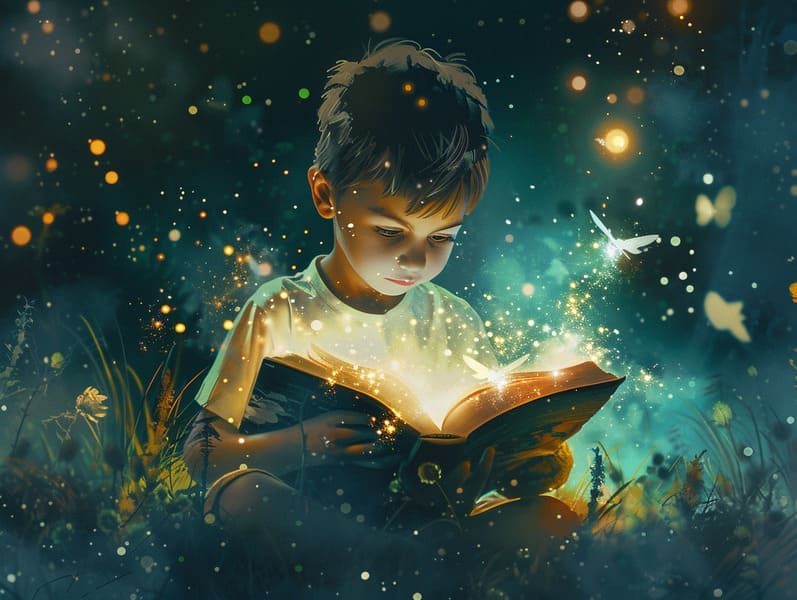The Journey of Ancient Fairy Tales and the Invariable Grandeur.
The Journey of Ancient Fairy Tales and the Invariable Grandeur.
Blog Article

Fairy tales have ancient roots. These tales have been spoken from one generation to the next far before they were ever transcribed. They developed from a variety of societies, including European traditions. They were initially told among older generations, often carrying themes and messages mirroring the societal norms and beliefs of the time.
The renowned Brothers Grimm, the two Grimm brothers, were among the first to gather and publish many of these beloved fairy tales. Their published works, "Grimm's Children's Stories," included stories like "The Little Glass Slipper," "Hansel and Gretel," and "The True Story of Snow White," which have since become pillars in the world of classic fairy tales. Similarly, the Danish author's charming tales, such as "The Mermaid's Tale," and "The Ugly Duckling," have touched hearts worldwide, solidifying their place in the pantheon of iconic fairy tales.
Though they are old, fairy tales remain as important as ever, especially as kids' bedtime tales. These magical stories are now available in many formats, including gorgeously illustrated books, captivating animations, and online storybooks.
Their enduring popularity can be traced to several fascinating points:
Crucial Morals: Old fairy tales often share important moral lessons. Stories like "The Story of the Boy Who Cried Wolf" teach the value of integrity, while "The Tortoise and the Hare" highlight the qualities of persistence and unpretentiousness. These stories offer young readers clear distinctions between truth and falsehood, guiding their moral compass in a soft yet meaningful way.
Sympathy and Perception: Timeless fairy tales frequently present personalities facing tests and troubles, stimulating audiences to sympathize with their struggles and cheer for their triumphs. For instance, "Beauty's Beast" reveals the value of looking deeper to see the true essence of a being, nurturing understanding and recognition.
Cultural Perception: Many ancient fairy tales are deeply embedded in the cultural contexts from which they developed. Learning from these narratives can provide illuminating insights into different traditions, fostering a sense of global understanding and respect.
Creativity and Fantasy: The whimsical elements in timeless fairy tales—spells and potions—inspire children’s dreams. These narratives transport readers to imaginary realms, enhancing fantasy-filled thoughts and a sense of mystery that lasts a lifetime.
Old fairy tales are not only whimsical but also edifying. They provide charming tools in cultivating various brain and heart skills in children. When ancient fairy tales are voiced, they promote language acquisition by teaching new lexicon and sophisticated sentence structures. This practice also boosts auditory skills and attention, as children pay close attention, ready to see what happens next.
Furthermore, debating the themes and characters of traditional fairy tales can improve critical thinking and evaluative skills. Young readers are instructed to discover patterns, expect results, and figure out cause and effect. These conversations also advance kids voice their thoughts and feelings, enhancing their emotional intelligence.
In today’s technological era, the abundance of web-based fairy tales has made these stories more reachable than ever. Online platforms and digital apps supply huge assortments of traditional fairy tales that can be accessed or played anytime, anywhere. Fairy tales narrated are particularly favored, giving an fascinating method for young ones to engage with these delightful tales. Audiobooks and read-out-loud stories take characters and settings to life, often supported by charming background sounds and harmonies that boost the narrative adventure.
The timeless charm of timeless fairy tales lies in their ability to alter to current times while staying true to their basic principles. Contemporary renditions of these fairy tales often incorporate more representative figures and modern settings, making them understandable to today’s audience. However, the main ideas of spirit, compassion, and justness remain unchanged, continuing to strike a chord with audiences of all ages.
Traditional fairy tales also offer a sense of ease and predictability. They deliver up a well-ordered narrative with a apparent beginning, middle, and end, often finishing with the settlement of conflicts and the triumph of good over evil. This consistency can be consoling for young ones, sharing a sense of sturdiness in an shifting world.
Classic fairy tales continue to enchant and guide new generations, maintaining their elegance and applicability in modern society. As bedtime stories for check it out kids, they yield a perfect blend of charm and understanding, enriching moral values, empathy, and creativity. The existence of free fairy tales online and the favor of fairy tales voiced affirm that these old narratives remain within reach to new generations.
By protecting and imparting these narratives, we continue to praise the rich tapestry of mythology and cultural heritage. Whether you are browsing a beautifully illustrated book, delving into a electronic library, or listening on an read-aloud book, the grandeur of classic fairy tales is always within reach. These narratives show us of the unceasing nature of tales and its ability to bring us together across generations and cultures.
Even if you are browsing a vibrantly illustrated book, accessing a digital collection, or listening to an read-aloud book, the radiance of ancient fairy tales is always within reach.
These stories demonstrate of the unceasing nature of stories and its ability to link us across centuries and lands, weaving a spell that fascinates and enlightens alike.